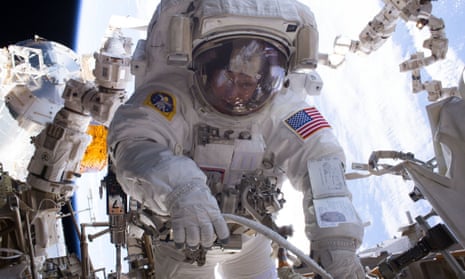There is at least a one in three chance that the first human to set foot on the moon this century will be a woman, Dr Ellen Ochoa, the head of Nasa’s Johnson space center has said.
In the early 1960s Nasa sent out rejection letters saying it had no plans to send women into space. Among those who apparently received the brush-off was a teenage Hillary Clinton. But the agency has since changed its tune, and in 1983 Sally Ride became the first American woman in space. In 2013 Nasa announced that half of its new class of eight astronauts were women – a first for the agency.
The gender split among astronauts means the first step taken on the Moon since the 1970s might well be by a woman. “About a third of our active astronauts are women, so chances are at least a third,” said Ochoa, a former astronaut.
While relations between the US and Russia were charged as a result of the Trump-Russia investigation, Ochoa said the International Space Station (ISS) was above politics, and not just physically. “It really hasn’t affected at all our operations with the ISS,” she said. “There is this bigger goal that both of the countries that people are really involved in working with [the ISS] day to day are really focused on. And I think that really helps.”
However she admitted the shift from Barack Obama’s focus on Mars to Donald Trump’s desire to first put boots back on the moon was somewhat disruptive.
“We do talk about how we can make the most efficient use of the taxpayers’ money if we have stability in the goals and where we are headed,” Ochoa said.
But, she added, the latest switch would not be a major upheaval. “We were already planning to do activities in the lunar vicinity to prepare us for Mars, now I think it will be more activity than we were originally thinking but all of the major investments that we have going on are still needed,” she said. “ It is not a big left turn or right turn or anything like that, it is a little bit more of a course correction.”
Speaking at the meeting of the American Association for the Advancement of Science in Austin, Ochoa also talked about her own time as an astronaut – – noting that it was a mental, rather than physical, exertion.
“People are watching everything that you are doing and so the entire day, everything that you do you are really trying to make sure you are doing everything exactly right,” she said.
